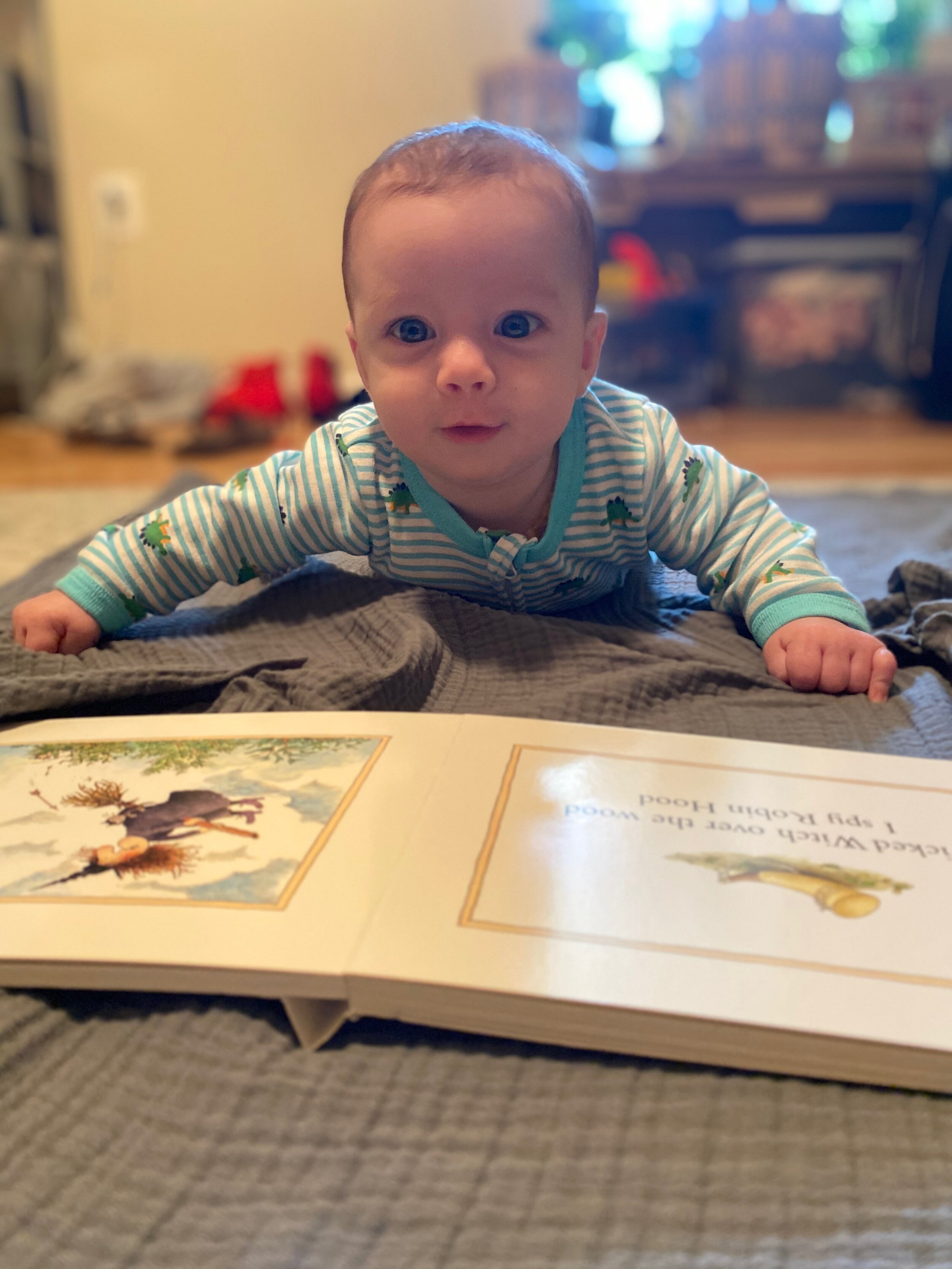Dr. Maria Montessori discovered that young children transition through a series of special times where they gravitate to specific developmental interests and needs. She called these times sensitive periods and during these periods children have an acute ability to learn certain skills with ease. They seek out certain work, they crave it and do not tire of it. When this brief sensitive period is over, that sensation of fascination passes, and the intense desire to learn that skill is gone. Once that sensitive period has passed, the child will have a more difficult time learning the skill.
Birth to age 1
Sensory learning: Babies interact with their environment in an effort to refine their many senses. This learning continues throughout early childhood, and Montessori classrooms are equipped with specialized materials that appeal to the child who is seeking such practice.
Verbal language: In the early months of a child’s life, they are listening to the language of others around them, attempting to make sense of sounds, patterns, and inflections. They derive meaning from the speech of those older than themselves even before they are able to speak.
Ages 1 to 4
Continued sensory learning and verbal language.
Development of speech: The child will begin to expand their vocabulary.
Motor coordination (both fine and gross): From body control and movement (running, jumping, skipping…) to manipulation of small tools (think holding a pencil, cutting with scissors, sewing, etc.), these three years involve a lot of work on the child’s part!
Ages 3½ to 4½
Continued sensory learning and verbal language.
Writing: Children at this age are ready to begin the work that will help them become writers. They will learn to hold a pencil properly, to draw lines carefully and intentionally, and to form shapes that lead to cursive and print letters
Ages 4 to 5
Continued sensory learning and verbal language and continued motor coordination (typically until shortly before age 6).
Reading: At the beginning of this sensitive period, the child is understanding sounds and blends. They then move on to reading simple words, more complex ones, and eventually stringing them into sentences
Mathematics: During this time the child is preparing to learn basic math skills, and eventually mastering them. They develop a sense of numeration, place value, and operations, among other important skills.
Ages 6 to 12
Social development: During the primary years children often engage in what is referred to as parallel play, when they sit beside one another but focus on their own agenda. In the elementary years, there is a definite shift; children crave the company of their peers. They want to sit together, talk together, work together, and learn from each other. They learn the many benefits of friendship while also developing skills to resolve conflict and work together as a group. They learn the delicate balance between the needs of the group and their individual needs.
Understanding and interest in justice and morals: When children at this age have recess time, adults commonly report that most of the time is spent by the children developing the rules for the game, with far less time being used to play the game itself. They are very interested in making sure things are fair, and they are at the perfect age to learn about character development and how we should treat one another.
Imagination: Children at this age use imagination not just as a fantasy world, but as a vehicle in which to place facts. Storytelling used to teach information is particularly useful at this time.
Interest and understanding in human history and culture: Now capable of thinking of more than themselves, elementary-aged children are keen to learn about the origins of humans and the various ways we live around the world and have lived throughout history.
Interest and understanding of the history and evolution of the universe: Much like their interest in humans, children at this age are curious about the universe and everything that resides in it. They are fascinated by creation stories, both those told from a modern scientific perspective and those that reflect historical cultures around the world. They are also the perfect age to learn about the evolution of life on earth.
Outlines like this one can often be helpful in determining what your child might be ready for, and what kind of things are appropriate to be in their environment. It is important to remember that ultimately it is a guide to following the child. Children will naturally be drawn to whatever their minds are ready to absorb. It is our work to notice what these things are and provide our children with the means necessary to fulfill their needs.
Our best advice (as it so often is) is to observe! Observe what is filling your child’s cup and encourage them to explore those things that are sparking their interest. Don’t wait, catch them while that spark is still gleaming!













